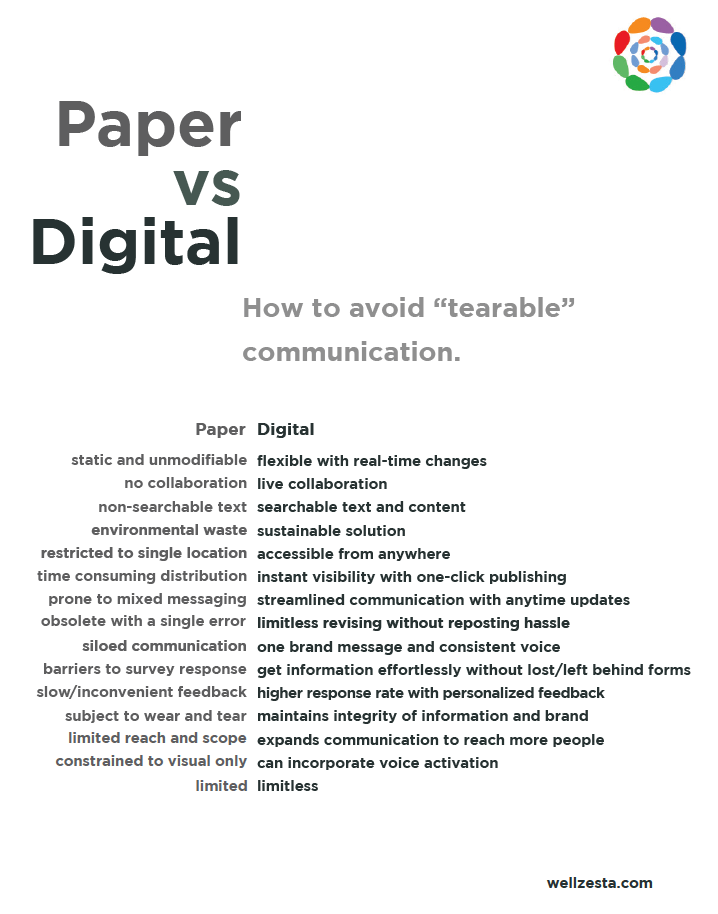Find out how your communication could go from good to great by ditching the printer, saving some trees, and updating in real-time.
Paper calendars, newsletters, and handouts are still standard modes of communication for many life plan communities, despite their drawbacks. Although paper is familiar, using it exclusively could lead to unfulfilling communication between residents and staff.
One way to think of going paperless is to remember all of the industries who have already done so. For example, airlines (book online, use phone as ticket); banking (digital statements, online billing and payments); real estate (almost all transactions are online instead of mounds of paper in an attorney’s office); discovery (yellow page books vs. Google and other search engines), hospitality (online reviews of restaurants, hotel booking online, now phones opening hotel door); healthcare (huge paper charts vs. online communication, EMRs, care coordination).
Senior living has the opportunity to benefit too; in fact, we can lead the way in communicating WELL with older adults. Here are five common mistakes that you could be making by sticking to paper communication.
1. Your messaging is static.
Have you ever printed hundreds of copies of a letter, only to realize that a critical detail was mistyped? Once a piece of communication has been printed, the only way to make changes is…to edit it and print again. This can be frustrating, costly, and wasteful.
Digital communication is editable in real-time.
2. You’re only communicating one-way.
Paper communication is one-dimensional: your staff sends messages to your residents. Residents can’t easily respond without a phone call or face-to-face meeting.
Digital communication allows for easy bidirectional contact.
3. You’re losing opportunities for resident feedback.
Do you only publish a resident survey quarterly or annually? You may be missing out on valuable feedback. Annual surveys don’t take advantage of real-time reactions, and residents often can’t recall how they felt about events after many months have passed.
Digital communication lets residents give immediate feedback.
4. You’re wasting money and resources.
How often do you print out copies of a handout or newsletter, only to see them thrown in the trash as soon as they’ve been read? Not only does this hurt the environment, but it ends up hurting your community’s budget too. Though switching to digital communication has an up-front cost, your community will save money in the long run.
Digital communication is eco-friendly and economically-friendly.
5. You’re forgoing the relevancy of digital communication.
Paper communication is comfortable, familiar — and outdated. It’s expected by some of today’s seniors, but what about the next generation, and the next?
Digital communication is communication for the future.

“At the same time America is graying, recent Pew Research Center surveys find that seniors are also moving towards more digitally connected lives. Today, 67% of seniors use the internet — a 55-percentage-point increase in just under two decades.” This number is likely much higher among the demographic living at Life Plan Communities.
Wellzesta offers communication choice. From displays and digital signage to an app on your smart phone — all enhanced with fun, personalized, on-site coaching.
Personalization is the new frontier. Digitalization gives us the ability to individualize messaging with clarity, flexibility, and consistency. There is power in bi-directional communication.
#lifeplancommunity #environmentalwellness #digitalfirst





